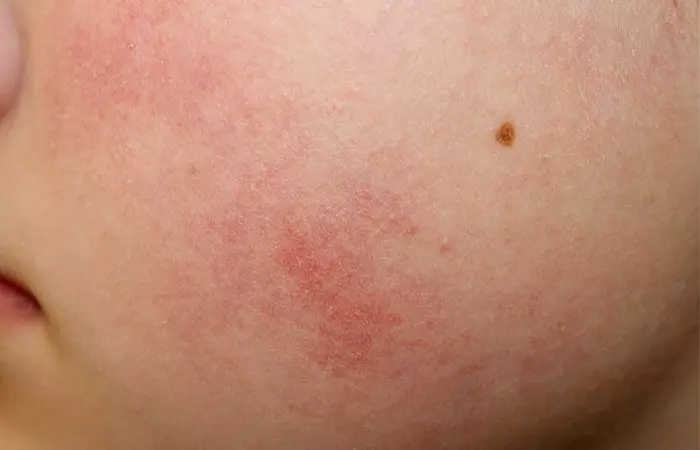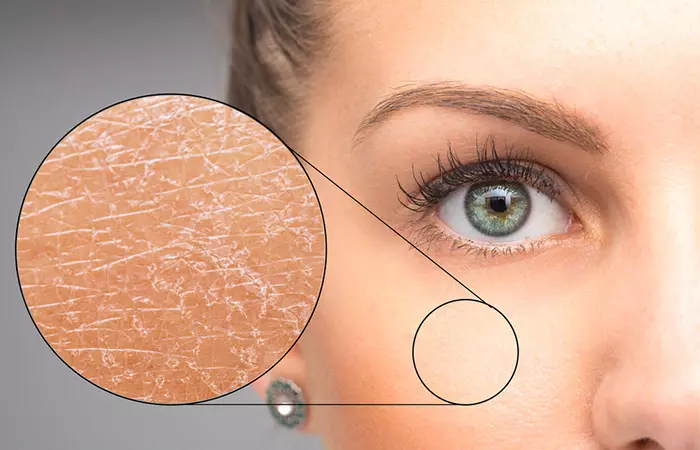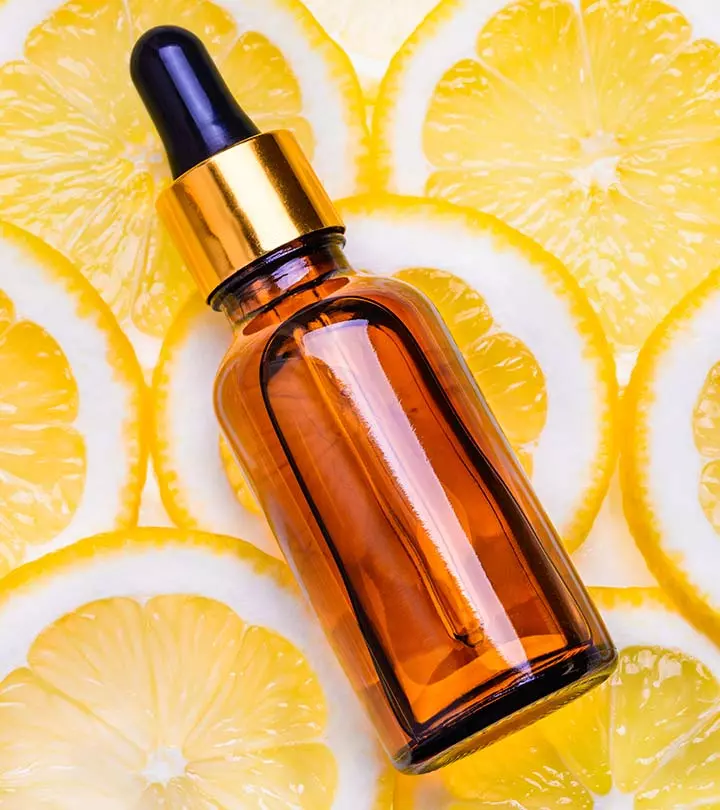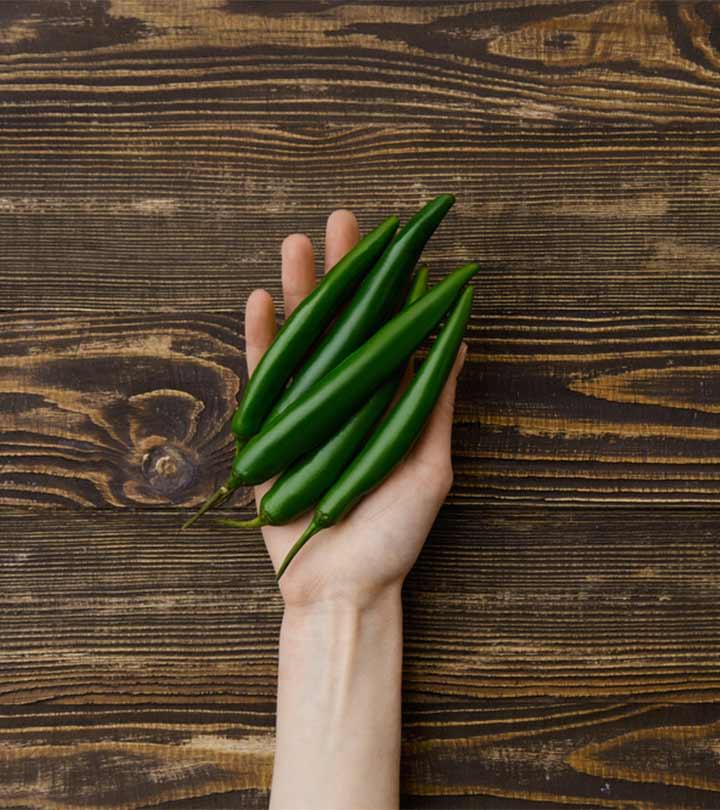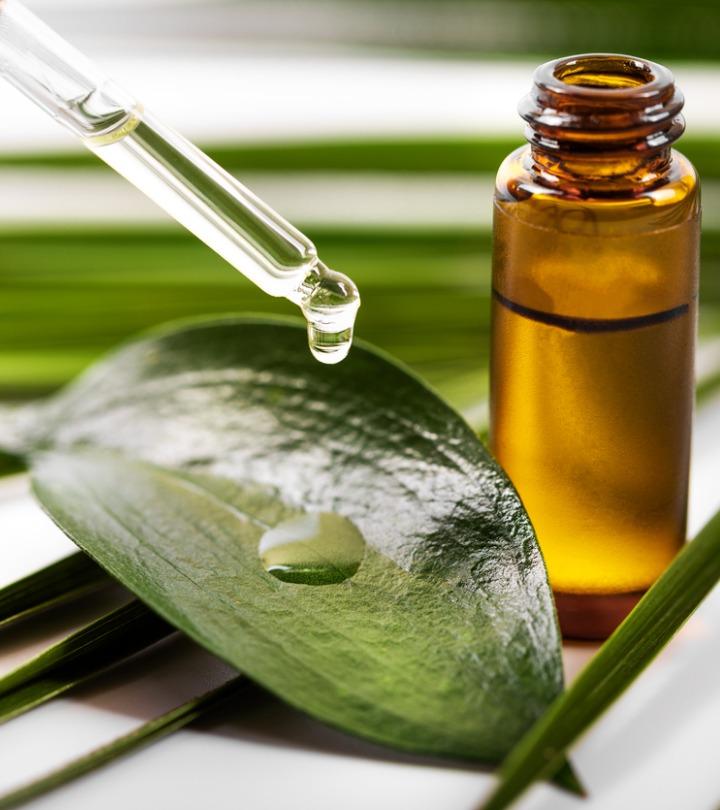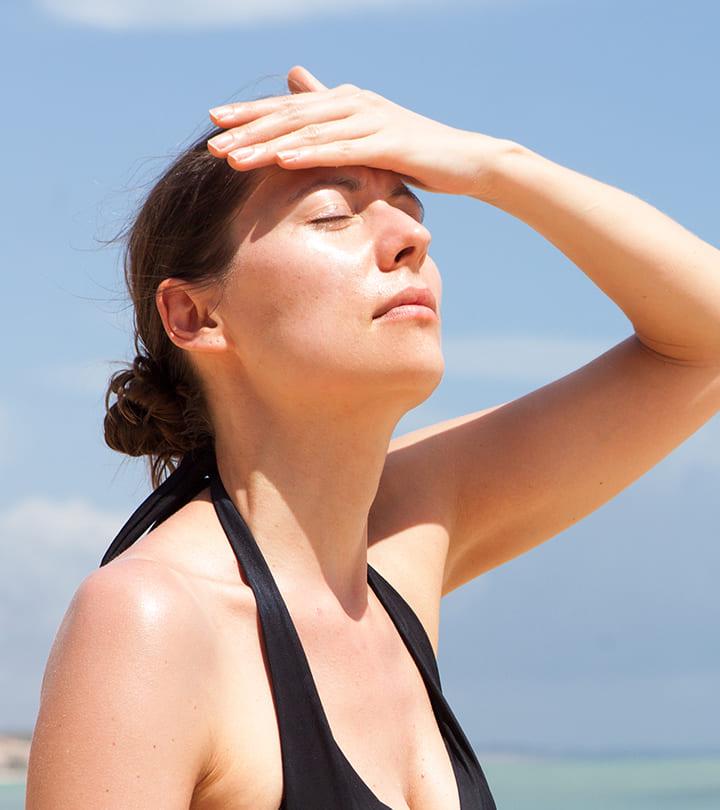Glycolic Acid Vs. Salicylic Acid: Which Is Better For Your Skin
A deeper understanding of both ingredients will help you choose the best one for your skin.

Image: Shutterstock
Ingredients used in skincare products play a significant role in improving your skin’s health. Glycolic acid and salicylic acid are the two ingredients in particular that are commonly found in many skincare products such as toners and cleansers. In this matchup of glycolic acid vs. salicylic acid, which one should you choose for your skin type and why? While both of these are good for your skin, which one of these will benefit your skin the most? Keep reading this article to find out.
In This Article
What Is Glycolic Acid?
Glycolic acid is an organic compound that belongs to the group of alpha-hydroxy acids (AHAs). This compound is commonly found in sugary and acidic fruits such as sugarcane, lemons, and melons. These acids are water-soluble and are used as exfoliants.
 Trivia
TriviaWhat Is Salicylic Acid?
Salicylic acid is also an organic compound found in willow bark and vegetables like broccoli, cucumber, and mushrooms. This belongs to the beta hydroxy acids (BHAs) group. BHAs are oil-soluble acids and can also be used as exfoliants.
 Did You Know?
Did You Know?Now that you’ve got an idea of what these ingredients are, let us understand which one is better for your skin according to your skin condition.
Glycolic Acid Vs. Salicylic Acid- Use Case For Skin Conditions
Given that glycolic acid is water-soluble and salicylic acid is oil soluble, certain skin conditions may favor one ingredient over the other.
- Acne Treatment
Glycolic acids possess anti-inflammatory properties that can help soothe the inflammation caused by acne and alleviate its symptoms (1). Salicylic acid also helps in treating acne as it unclogs your pores by removing the excess dirt (2). While both seem to do the job, studies suggest that salicylic acid is better in treating acne if you have oily and acne-prone skin (3). In a study, participants with acne were treated with glycolic acid and salicylic acid. The group which was treated with salicylic acid saw a 74% reduction in acne in comparison to a 70% reduction with those treated with glycolic acid (3). You can use a salicylic acid-based exfoliant to help with your acne.
Glycolic acid can be used to treat acne if you have dry skin. Using skincare products such as glycolic acid cream and glycolic acid cleanser might prove to be beneficial in treating acne (1).
- As A Chemical Peel
Both glycolic acid and salicylic acid-based peels are beneficial for exfoliation. However, glycolic acid-based chemical peels have an edge over their counterparts as they can be used on all skin types, while salicylic acid peels are suitable mainly for oily skin types. In addition, glycolic acid-based peels also help in maintaining the moisture of your skin by regulating its pH level (4).
- Keratosis Pilaris Treatment
Salicylic acid is a keratolytic agent (prevents excess keratin formation) that permeates deep into the pores and unclogs the dirt. Keratosis pilaris is a skin condition that causes excess production of keratin that blocks the hair follicles and pores. Studies suggest that salicylic acid exfoliants and peels can help break down keratin and can be used to treat this condition (2). In this case, salicylic acid is better suited to treat this condition.
- Treatment Of Sun Damaged Skin
Sun-damaged skin can be treated by using skincare products that contain either glycolic acid or salicylic acid. Glycolic acid can help prevent UV-induced conditions and salicylates (derivatives of salicylic acid) are often used in sunscreens (2),(4). However, salicylic acid-based products are a better choice as glycolic acid-based products can increase the sensitivity of your skin to sunlight and heat and may cause you discomfort (5). For this reason, you should also avoid salicylic acid before and after getting any kind of laser or light treatment for your skin.
These are some of the skin conditions that can be treated using glycolic acid and salicylic acid. Let us look at some of the other benefits of these ingredients.
Benefits Of Glycolic Acid And Salicylic Acid
Hydroxy acids such as glycolic and salicylic acid have been used in skincare treatment for nearly a few centuries. Present-day cosmetics and skincare products use these as active ingredients. That being said, here are a few shared benefits of these ingredients.
- May Help In Anti-aging
Studies suggest that anti-aging skincare products that have glycolic acid or salicylic acid as active ingredients may help reduce wrinkles and fine lines. The exact science behind this is not known, however, there is a working theory that has been popularly accepted. According to this theory, these ingredients help in removing calcium ions that are deposited in the skin due to aging. Removal of this excess calcium helps promote cell growth. This helps in making the skin appear younger and wrinkle-free (6). Salicylic acid peels help improve skin texture, making it appear smooth, and may also improve the appearance of fine lines (2).
- May Help Lighten Skin Tone
Glycolic acid may help in reducing the size of the pores on your skin, thereby improving its texture and leaving it brighter and lighter. Studies suggest the use of creams that contain glycolic acid and glycolic acid peels may also help reduce the risk of hyperpigmentation that causes dark spots (1).
Dermatology studies also suggest that using a chemical peel containing salicylic acid can also help reduce hyperpigmentation and can have a whitening effect on the skin (7).
- May Prevent Pimples
Both glycolic and salicylic acids can help in preventing pimples and maintaining healthy, radiant skin. A study published in the Journal of Cosmetic Dermatology found that over 90% of patients experienced significant improvement in their acne after using glycolic and salicylic acids for 2 weeks. Additionally, 70-80% of patients reported smoother skin texture (8).
While using skincare products with these ingredients are great for your skin’s health and are a good addition to your skincare routine, which is the right one for your skin type? Let us find out in the next section.
What Skin Type Is It Suitable For
With any skincare product, it is vital to take your skin type into consideration as different products will produce varied results based on your skin type.
Glycolic acid-based products are ideal for use if you:
- have non-oily skin or dry skin.
- have uneven skin tone or want to reduce hyperpigmentation.
- want to reduce the signs of aging skin.
- want to alleviate symptoms of acne.
On the other hand, salicylic acid-based products are ideal for use if you:
- have oily skin.
- have clogged pores.
- want to reduce the signs of aging skin.
Hopefully, with this knowledge, you may be able to choose the right skincare products with any of these two active ingredients based on your skin type. Let us look at how and when you need to use these products. The best way to know which of these ingredients is better suited to your skin type is to reach out to a dermatologist.
Glycolic Acid Vs. Salicylic Acid – When And How To Use
Both glycolic acid and salicylic acid-based skincare products can be used in the form of creams, serums, toners, cleansers, face masks, and peels. They can be used during the night and day as well. Some products may be formulated to be used as overnight creams, peels, or masks. Products like serums and cleansers can be used at any time to remove dead skin cells and clean clogged pores. Certain salicylic acid-based products may not be recommended for daytime use as they can increase your skin’s sensitivity to sunlight (5).
Both glycolic and salicylic acids can help improve your skin health. But can they be used together? Find out in the next section.
Can You Use Glycolic Acid With Salicylic Acid?
Yes, glycolic and salicylic acids go well together. However, it is important to do so carefully. Introduce these acids gradually and in lower concentrations into your skin care routine. Use them on alternate days or use one in the morning and the other one at night to reduce the risk of skin irritation. Ensure that you apply sunscreen before stepping out as these acids can make your skin sensitive to the sun.
References
Articles on StyleCraze are backed by verified information from peer-reviewed and academic research papers, reputed organizations, research institutions, and medical associations to ensure accuracy and relevance. Read our editorial policy to learn more.
Glycolic and salicylic acids are organic compounds used as exfoliants and to reduce the appearance of fine lines and wrinkles. While various skin care products contain these, they are also found in certain fruits and vegetables. In the infographic below, we have listed these natural sources of glycolic and salicylic acids. Take a look.

Illustration: StyleCraze Design Team
Glycolic and salicylic acid are popular ingredients used in various skin care products. Using glycolic and salicylic acids may help reduce fine lines and wrinkles and brighten your skin. However, it is important to understand which of these acids may suit which skin type. Glycolic acid is water-soluble and is suitable for dry skin, while salicylic acid is oil-soluble and is suitable for oily skin. You will find salicylic and glycolic acids in skin care products like toners, cleansers, or face masks. We hope this article helped you put the glycolic acid vs. salicylic acid debate to rest.
Frequently Asked Questions
Is salicylic acid or glycolic acid better for blackheads?
Salicylic acid is a stronger option as a blackhead removal because it penetrates deeper into the skin to remove impurities from your pores. It is these impurities that clog the pores of your skin and lead to blackheads and whiteheads.
Does glycolic acid darken skin?
It is generally believed that overuse of glycolic acid and other AHAs on dark skin can stimulate melanocytes (melanin-producing cells) and lead to post-inflammatory hyperpigmentation. Glycolic acid is more effective in removing dead skin cells from scars and dark spots to even out skin tone.
Can I use salicylic acid in the morning and glycolic acid at night?
Yes. Skin experts recommend using salicylic acid in the morning to unclog pores and avoid acne, and glycolic acid at night for pore cleansing, reducing, and exfoliating as well as for dead skin cell removal.
Key Takeaways
- Glycolic acid is a water-soluble organic compound that belongs to the group of AHAs whereas salicylic acid is an oil-soluble organic compound belonging to the BHAs group.
- Both can treat acne, but salicylic acid is better for treating acne on oily and acne-prone skin.
- Glycolic acid-based chemical peels can be used on all skin types, while salicylic acid peels are suitable mainly for oily skin.
- Glycolic acid based products are more suited for dry skin whereas salicyclic based products are better suited for oily skin.
Confused about which ingredient is best for your skincare routine? Dive into this informative video about glycolic acid and salicylic acid and discover which one suits your skin needs best.
References
Articles on StyleCraze are backed by verified information from peer-reviewed and academic research papers, reputed organizations, research institutions, and medical associations to ensure accuracy and relevance. Read our editorial policy to learn more.
- Glycolic Acid Peel Therapy – A Current Review
https://www.researchgate.net/publication/259628237_Glycolic_acid_peel_therapy_-_A_current_review - Salicylic Acid as a Peeling Agent: A Comprehensive Review
https://www.ncbi.nlm.nih.gov/labs/pmc/articles/PMC4554394/ - Comparative Study of 35% Glycolic Acid 20% Salicylic-10% Mandelic Acid and Phytic Acid Combination Peels in the Treatment of Active Acne and Postacne Pigmentation
https://www.researchgate.net/publication/335982535_Comparative_Study_of_35_Glycolic_Acid_20_Salicylic-10_Mandelic_Acid_and_Phytic_Acid_Combination_Peels_in_the_Treatment_of_Active_Acne_and_Postacne_Pigmentation - Dual Effects of Alpha-Hydroxy Acids on The Skin
https://www.ncbi.nlm.nih.gov/labs/pmc/articles/PMC6017965/ - The Effects of Topically Applied Glycolic Acid and Salicylic Acid on Ultraviolet Radiation-Induced Erythema DNA Damage and Sunburn Cell Formation in Human Skin
https://www.ncbi.nlm.nih.gov/labs/pmc/articles/PMC2791365/ - An Antiaging Skin Care System Containing Alpha Hydroxy Acids And Vitamins Improves The Biomechanical Parameters Of Facial Skin
https://www.ncbi.nlm.nih.gov/labs/pmc/articles/PMC4277239/ - Whitening Effect of Salicylic Acid Peels in Asian Patients
https://www.researchgate.net/publication/7139863_Whitening_Effect_of_Salicylic_Acid_Peels_in_Asian_Patients - Two is better than one: The combined effects of glycolic acid and salicylic acid on acne-related disorders
https://pubmed.ncbi.nlm.nih.gov/32250551/#
Read full bio of Dr. Schwarzburg
Read full bio of Anjali Sayee
Read full bio of Monomita Chakraborty






